
|
|
|
|
|
|
Classic Bikes
Custom Bikes
Individual
Racing Bikes AJP
AJS
Aprilia
Ariel
Avinton / Wakan
Bajaj
Benelli
Beta
Bimota
BMW
Brough Superior
BRP Cam-Am
BSA
Buell / EBR
Bultaco
Cagiva
Campagna
CCM
CF Moto
Combat Motors
Derbi
Deus
Ducati
Excelsior
GASGAS
Ghezzi Brian
Gilera
GIMA
Harley Davidson
Hero
Highland
Honda
Horex
Husaberg
Husqvarna
Hyosung
Indian
Jawa
Kawasaki
KTM
KYMCO
Laverda
Lazareth
Magni
Maico
Mash
Matchless
Mondial
Moto Guzzi
Moto Morini
MV Agusta
MZ / MuZ
NCR
Norton
NSU
Paton
Peugeot
Piaggio
Revival Cycles
Roland Sands
Royal Enfield
Sachs
Sherco
Sunbeam
Suzuki
SWM
SYM
Triumph
TVS
Ural
Velocette
Vespa
Victory
Vincent
VOR
Voxan
Vyrus
Walt Siegl
Walz
Wrenchmonkees
Wunderlich
XTR / Radical
Yamaha
Zero
Video
Technical
Complete Manufacturer List
|
Kawasaki ZX-10RR Ninja Suzuka 8-Hours Race Bike |
| . |
The highly prestigious Suzuka 8 Hours FIM Endurance World Championship race has always been thought about in two ways. It is either the longest sprint race in the world, or the most intense endurance race imaginable.
After a truly epic and finally dramatic contest the Kawasaki 2019 Racing Team Suzuka 8 Hours squad took the race victory on their Ninja ZX-10RR with four-time World Superbike Champion Jonathan Rea and Leon Haslam, securing Kawasaki’s first win at this highly prestigious event since 1993 with Scott Russell and Aaron Slight.
This Kawasaki Ninja ZX-10RR, had to be modified with Endurance Specifications to be ready for the prestigious Suzuka 8 Hour race.
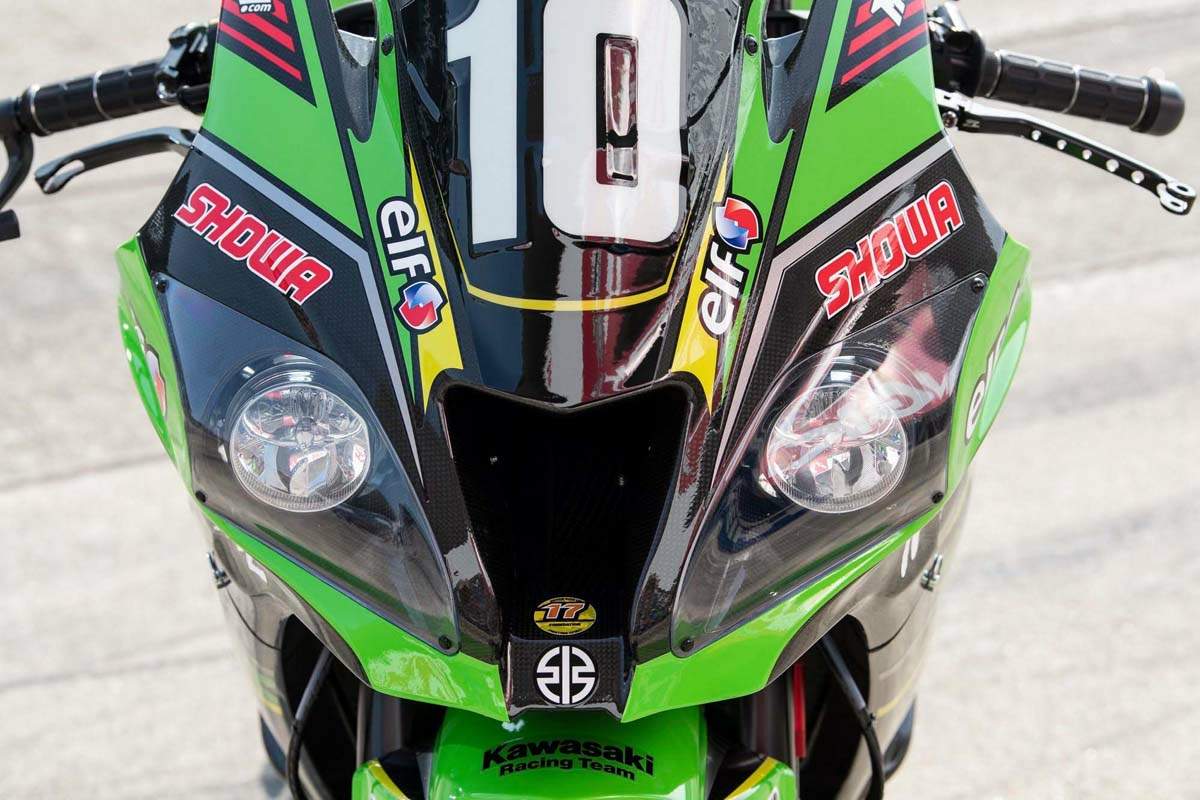
The process of
building a full-competitive Ninja ZX-10RR for this highly specialised racing
category began long ago. Here we outline the changes and technical differences
between an official WorldSBK KRT machine and the official KRT Suzuka 8 Hours
entry.
In reality both of those seemingly opposite ideas are correct, which means
potential winners have to make their most potent machine race at full pace for
the entire eight hours, in some of the most punishing conditions imaginable.
Fundamentally,
WorldSBK and EWC share many technical regulations, but there have to be some
changes made by regulation, and some to allow for quick turnaround in pitlane at
each fuel stop.
The engine spec of the Rea/Haslam/Razgatlioglu machine at the Suzuka 8 Hours is
more or less the same as the KRT WorldSBK machine, even in terms of the major
engine parts and components. An engine in any modern Superbike cannot be thought
of as a stand-alone unit, as what really controls its potential performance is
‘mapping’ – the relationship between ignition and how much fuel and air the
engine is given at any one point in the rev-range.
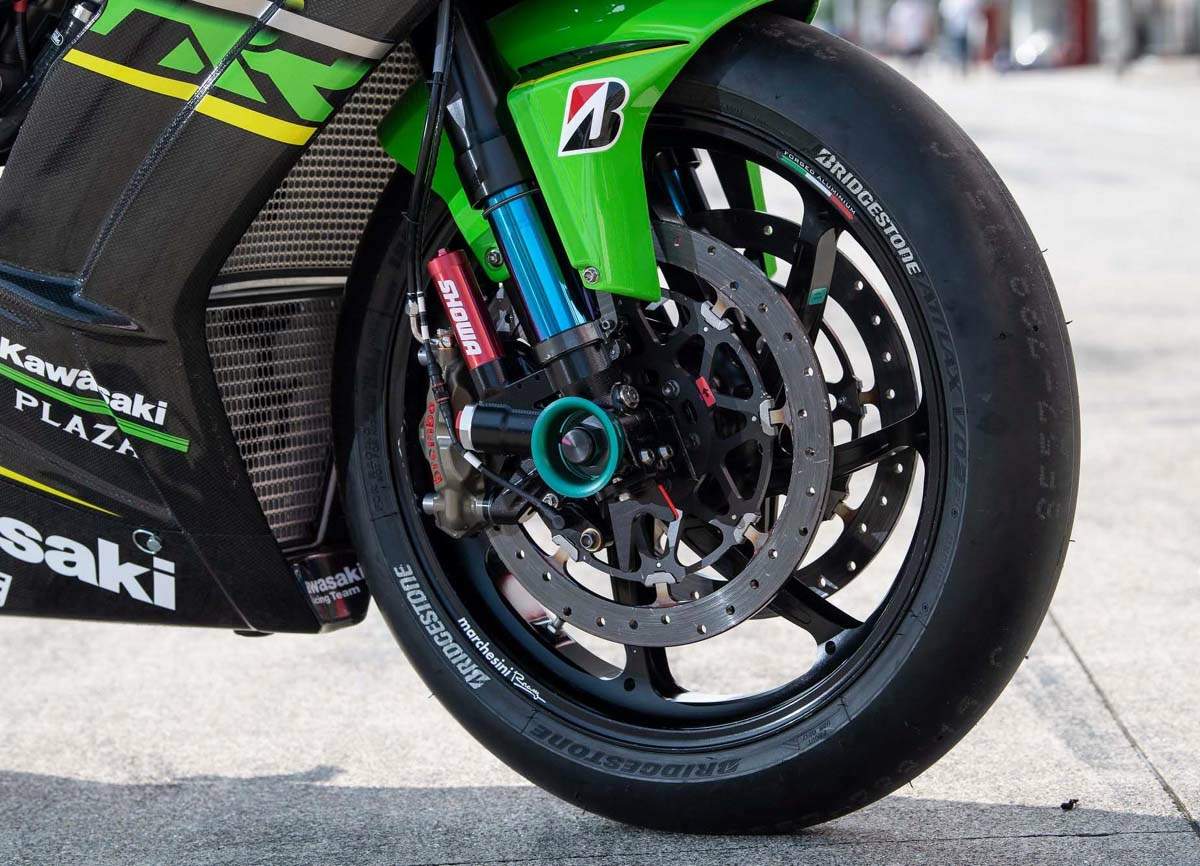
In general, the leaner the fuel/air mixture is, the more power it makes and the
more aggressive the engine responds to throttle demands. A Suzuka 8 Hours spec
machine can make the same outright power as the WorldSBK bike, but whether it
does so in any one session is down to how the mapping is set-up. And this
depends on the team’s overall race strategy, which is arrived at after practice
and qualifying data has been examined. And, to nobody’s surprise, that is
confidential information right now - and possibly forever!
It may surprise some people that despite the race taking place in ambient
temperatures often well into the high 30°C range, the WorldSBK KRT engine
cooling system is so good that no real changes are made. No double radiators, no
extra oil coolers - the WorldSBK set-up is refined and capable enough to cope.
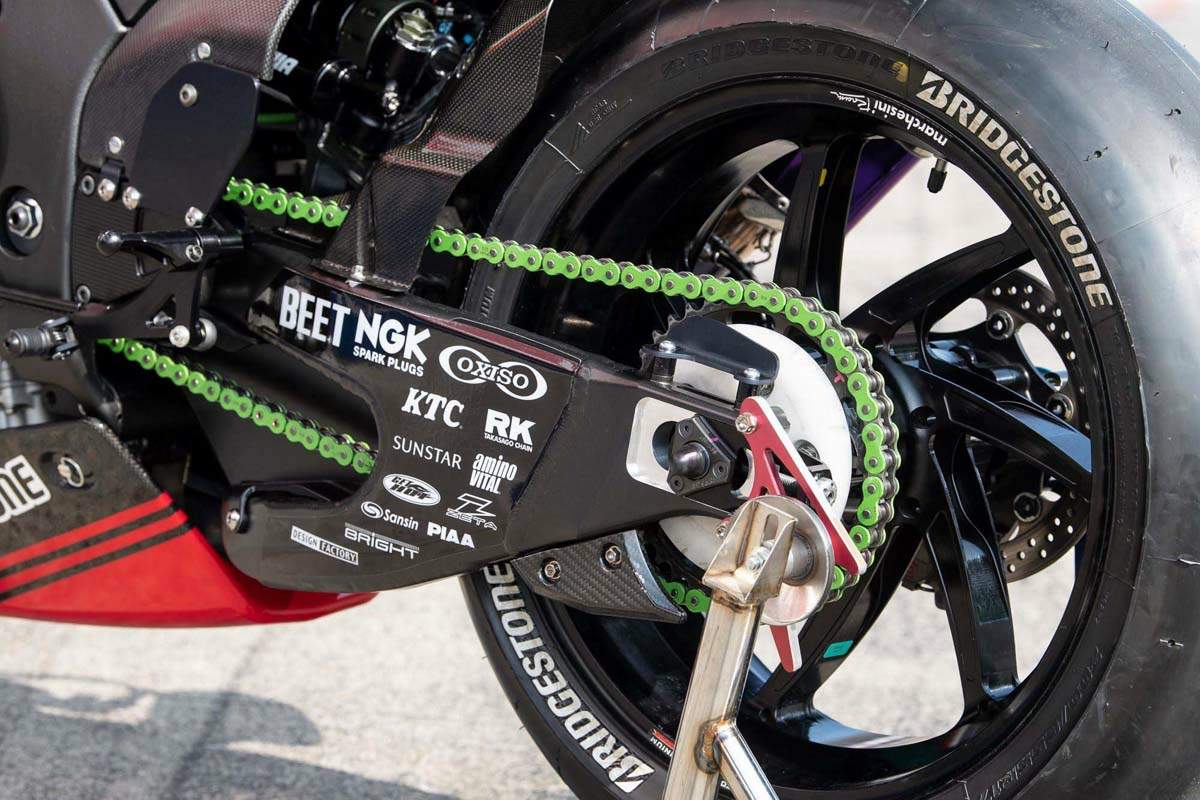
One major component difference is in the gearbox itself. EWC technical regulations allow for a ‘free’ gearbox, rather than one pre-defined set of internal rations that the teams must use all season long in WorldSBK. Internal ratios can be altered for Suzuka making the right gearing in each corner exit as much of a performance tool as a powerful engine. Full use is made of this freedom, with all six gears used in the race. First gear is selected three times over each lap of the 5.821km ‘figure eight’ circuit.
Possibly the
biggest WorldSBK-to-Suzuka change for the technical staff – and riders – to
engage with is the jump from WorldSBK’s single make Pirelli’s tyres to the
Bridgestones that will be used at Suzuka. Their different tyre constructions and
characteristics offer up a different load request from the suspension and
chassis, but the suspension units, plus the rear suspension link, are the same
as those used in WorldSBK.
During the race both tyres will be changed at every stop to maximise performance
on track.
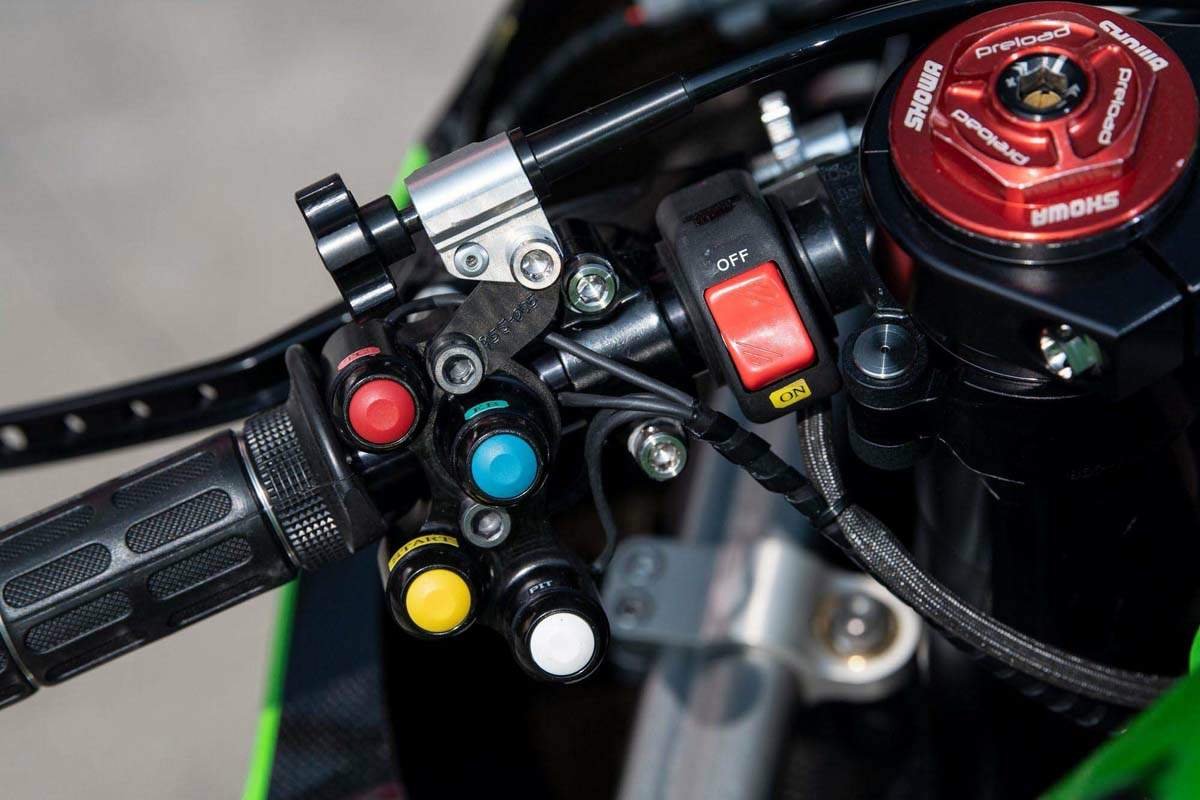
But performance in
pitlane is often the deciding factor in endurance racing, which brings in some
real component changes from the WorldSBK scene – and some much more regular use
of some other parts.
Time saved in the pits is just as valuable as time made up on track – the
stopwatch does not differentiate.
Quickly detachable handlebars, foot pegs, brake lines and quick wheel change
systems are all introduced in EWC, to help in pit stop and potential crash
damage scenarios.
WorldSBK machines may look like they run headlights but they are just stickers;
the Suzuka bike features small but very real Xenon front headlamps and LED
taillights. The wiring loom is split into sections to speed up pitlane work, but
the ECU location is unchanged.
KRT will run a standard generator and battery, as they do in WorldSBK, as the
engine must start ‘on the button’, as it were, at any point in the 8-Hours race.
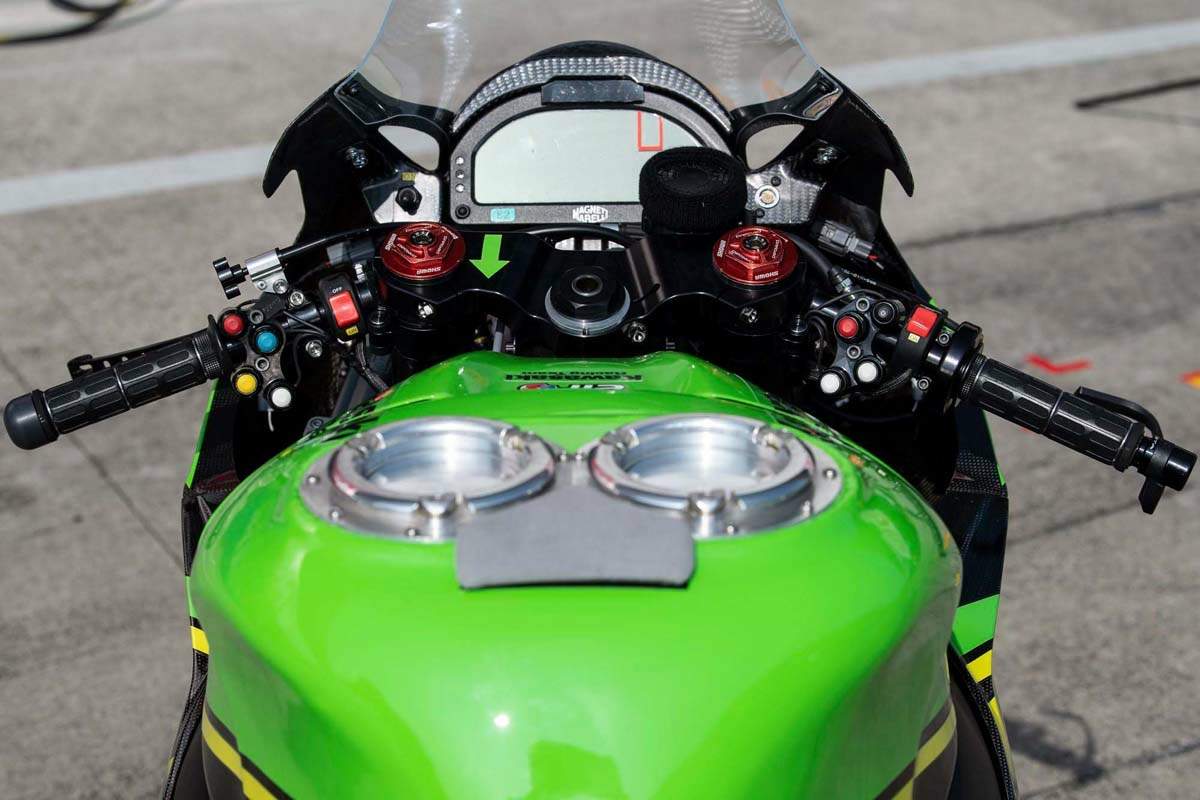
The fuel tank is taken out to the maximum 24-litre capacity at Suzuka, and
fitted with two spring loaded fuel caps, to allow the use of twin hose fillers.
Fuel goes into one tank opening through one hose, and when it comes out of the
other transparent hose, the tank is completely full.
Even with the race held over eight hours one complete set of brake pads are used
but they are of a harder than usual pad compound, and wider in thickness, to
last longer. The brake calipers are also different from WorldSBK, to allow the
fitment of those wider pads.
Source Kawasaki
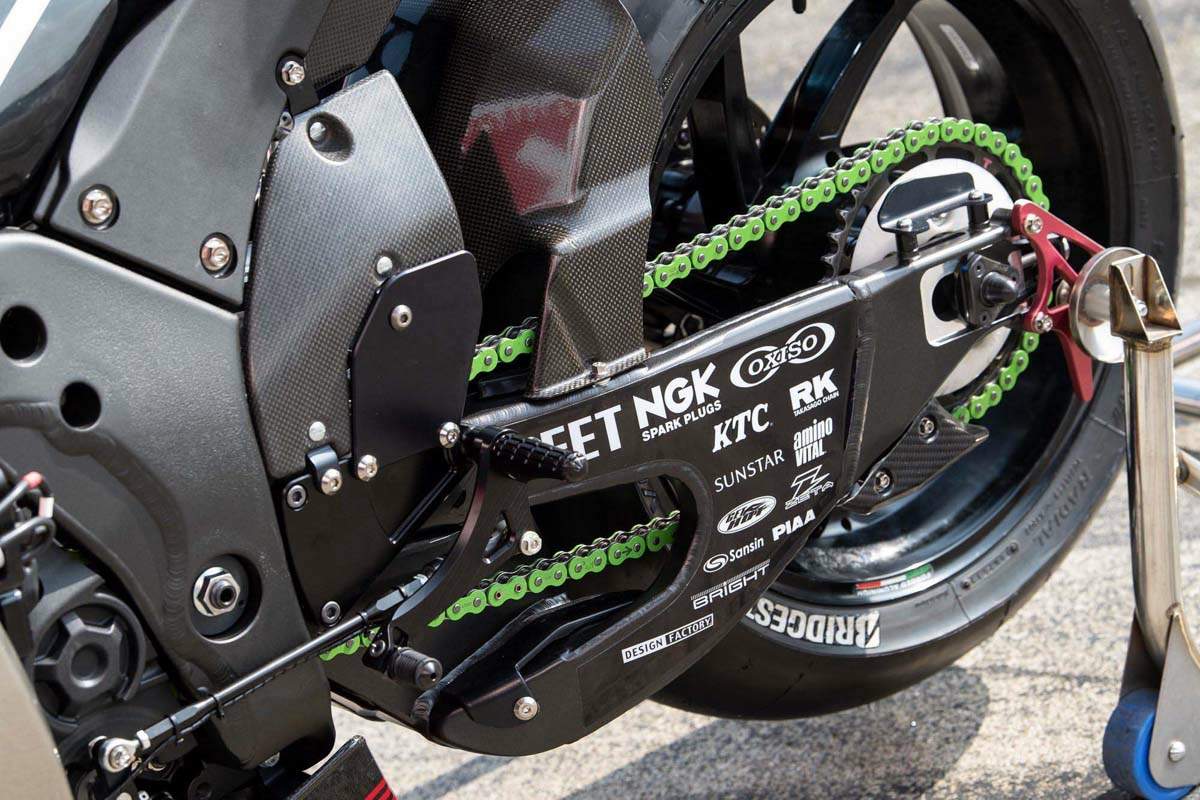
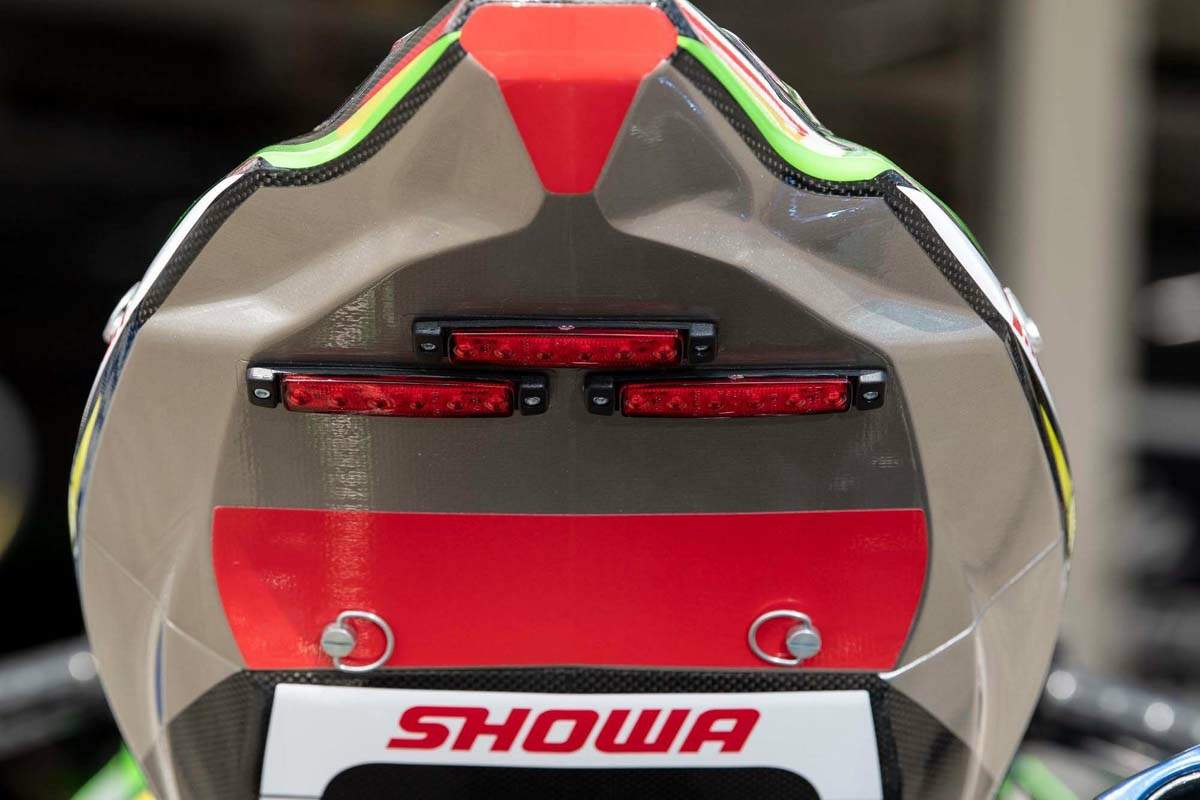
|
Any corrections or more information on these motorcycles will be kindly appreciated. |